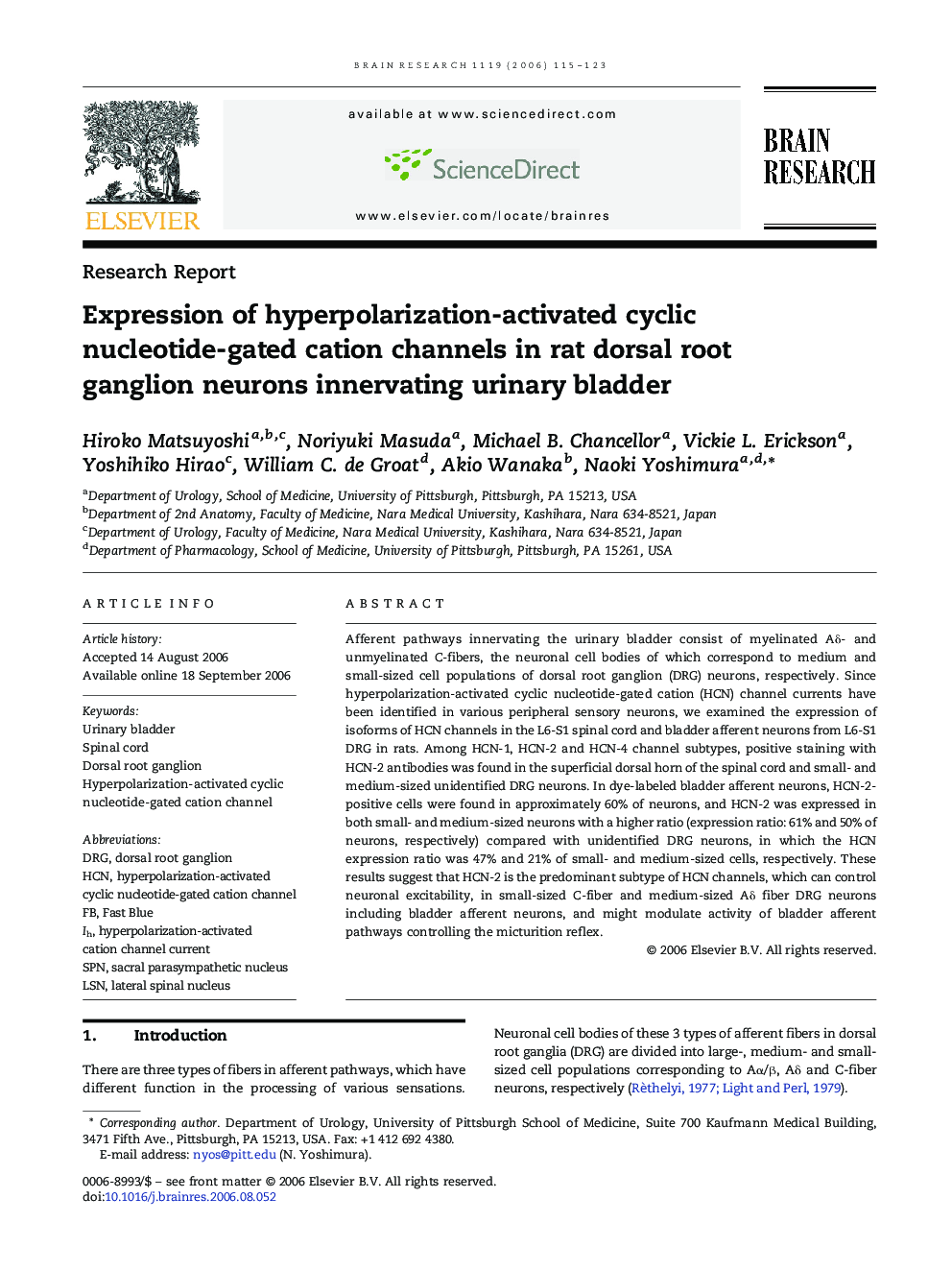| Article ID | Journal | Published Year | Pages | File Type |
|---|---|---|---|---|
| 4332073 | Brain Research | 2006 | 9 Pages |
Afferent pathways innervating the urinary bladder consist of myelinated Aδ- and unmyelinated C-fibers, the neuronal cell bodies of which correspond to medium and small-sized cell populations of dorsal root ganglion (DRG) neurons, respectively. Since hyperpolarization-activated cyclic nucleotide-gated cation (HCN) channel currents have been identified in various peripheral sensory neurons, we examined the expression of isoforms of HCN channels in the L6-S1 spinal cord and bladder afferent neurons from L6-S1 DRG in rats. Among HCN-1, HCN-2 and HCN-4 channel subtypes, positive staining with HCN-2 antibodies was found in the superficial dorsal horn of the spinal cord and small- and medium-sized unidentified DRG neurons. In dye-labeled bladder afferent neurons, HCN-2-positive cells were found in approximately 60% of neurons, and HCN-2 was expressed in both small- and medium-sized neurons with a higher ratio (expression ratio: 61% and 50% of neurons, respectively) compared with unidentified DRG neurons, in which the HCN expression ratio was 47% and 21% of small- and medium-sized cells, respectively. These results suggest that HCN-2 is the predominant subtype of HCN channels, which can control neuronal excitability, in small-sized C-fiber and medium-sized Aδ fiber DRG neurons including bladder afferent neurons, and might modulate activity of bladder afferent pathways controlling the micturition reflex.
